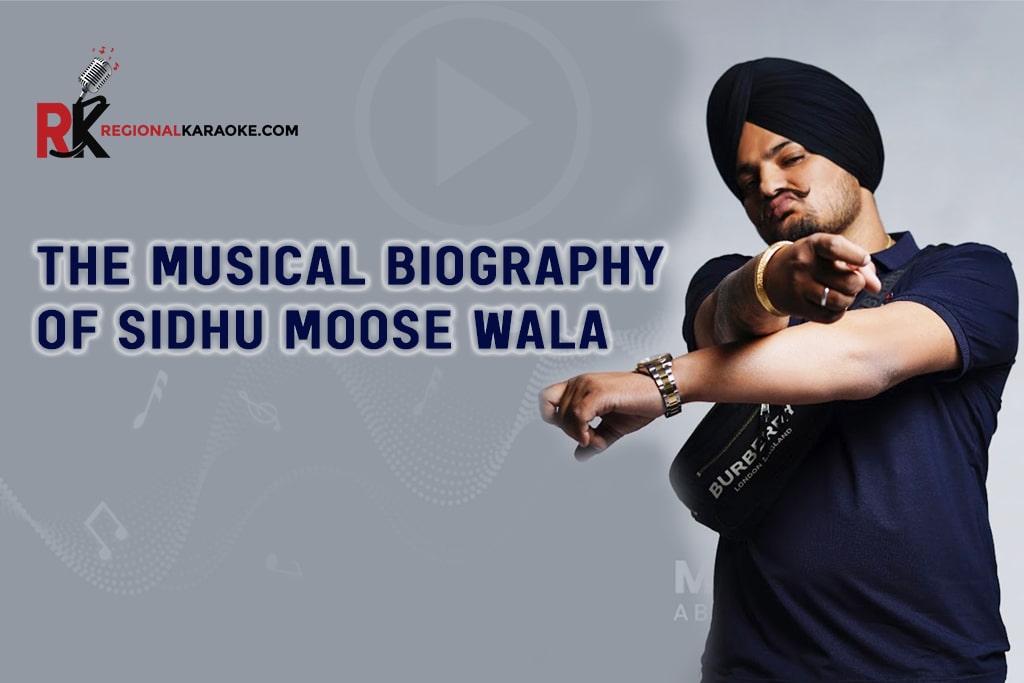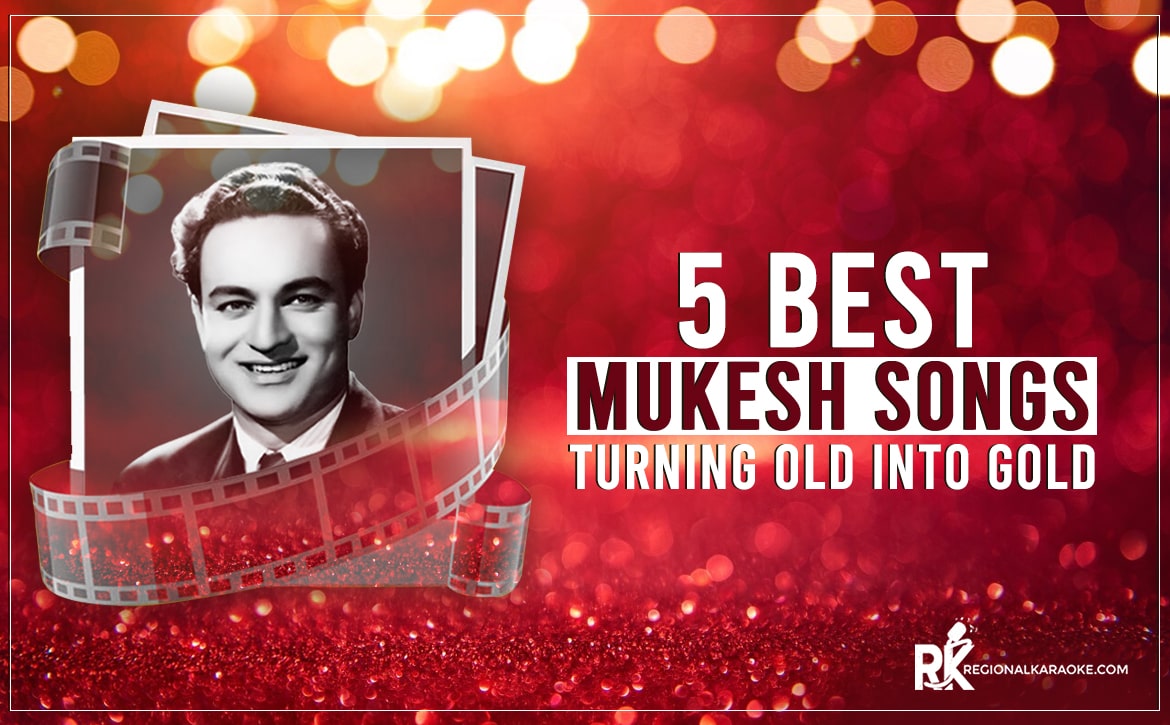Navaratri Store-Wide Karaoke Sale | 30% Off | USE COUPON CODE - NAVRATRI30

- Conclusion: A Legend Lives On
- 1. Early Life and Cultural Roots (1993–2015)
- 2. The Lyricist and His Breakthrough (2016–2018)
- 3. Global Stardom and Cultural Resonance (2018–2020)
- 4. Political Awakening and Activism (2020–2022)
- 5. Controversies and Artistic Freedom
- 6. The Assassination and Its Aftermath (2022)
- 7. Posthumous Influence and Legacy
- 8. Musical Style and Artistic Influences
- 9. Collaborations and Crossovers
- 10. The Sidhu Moosewala Phenomenon on Social Media
- 11. Impact on Punjabi Youth and Diaspora Identity
- 12. Merchandise, Fashion & Personal Branding
- 13. Unreleased Songs, Leaks, and Legacy Management
- 14. Influence on Emerging Artists
- 15. Discography Summary
- Albums:
- Notable Singles:
- Collaborations:
- Lyrics Analysis: The Soul of Sidhu's Music
- "295":
- "The Last Ride":
- "SYL":
Sidhu Moose Wala, born as Shubhdeep Singh Sidhu, was not just a singer or lyricist. He was a voice that captured the hearts of millions, a rebel who challenged norms, and a storyteller who painted the struggles and aspirations of the Punjabi youth with every verse he wrote. His journey from a small village in Punjab to global recognition is a tale of talent, grit, controversy, and legacy.
1. Early Life and Cultural Roots (1993–2015)
Born on June 11, 1993, in Moosa, a modest village in Punjab’s Mansa district, Sidhu Moose Wala came from a Sikh Jatt family. His father, Bhola Singh, served in the Indian Army before retiring, and his mother, Charan Kaur, later became the village Sarpanch. This mix of military discipline and rural politics shaped his early understanding of leadership, honor, and community service.
Growing up, Sidhu was influenced by the poetic verses of Punjabi folk legends, such as Kuldeep Manak, and the radical ideas of poets like Baba Bulleh Shah. But what made him unique was his simultaneous fascination with American hip-hop artists such as Tupac Shakur. The confluence of folk wisdom and revolutionary rap sowed the seeds of a new voice—one that would soon echo globally.
Sidhu pursued electrical engineering at Guru Nanak Dev Engineering College in Ludhiana. It was here that he began writing lyrics—at first, for fun, and then, as a way to articulate his growing worldview. These writings soon became personal anthems, filled with raw emotion, societal critique, and personal pride. In 2016, he moved to Canada for further studies, a life-altering step that placed him in the heart of the Punjab and exposed him to a more intense multicultural environment. Here, he began nurturing his music career more seriously.
2. The Lyricist and His Breakthrough (2016–2018)
Sidhu began his professional music journey not as a singer, but as a lyricist. His lyrics for Ninja’s song "License" (2016) caught the industry's attention. The song resonated with listeners for its authenticity and street-level storytelling, and it quickly gained traction in the Punjabi music scene.
Encouraged by the reception, Moose Wala decided to take the mic himself. His debut song, "So High" (2017), produced by Byg Byrd, was a powerful blend of gangster rap and Punjabi swag. It amassed millions of views on YouTube within days. "So High" wasn’t just a hit; it was a revolution in Punjabi music. It brought a new kind of lyrical aggression, honesty, and cultural bravado that the audience hadn't heard before.
Following the success of "So High," Sidhu released a series of hits, including "Warning Shots," "Issa Jatt," and "Selfmade." Each track reinforced his brand—a fearless, outspoken artist who wasn't afraid to challenge societal norms. In these early years, Moose Wala not only built a loyal fanbase but also defined a new sub-genre of Punjabi music that seamlessly merged desi themes with Western rap elements.
3. Global Stardom and Cultural Resonance (2018–2020)
2018 marked a major turning point with the release of his debut album, "PBX 1." It soared to the top of the Billboard Canadian Albums chart—a monumental achievement for a Punjabi artist. The album showcased Sidhu’s versatility, offering tracks that ranged from romantic ballads to hard-hitting gangsta anthems.
Some key tracks from PBX 1 include:
- "Bad Fellow"
- "Tochan"
- "Jatt Da Muqabala"
- "Selfmade"
The themes were consistent: identity, power, loyalty, and defiance. What made his music so unique was its ability to speak to the lived realities of millions of Punjabis and South Asians living abroad. Whether it was a truck driver in Canada or a college student in Amritsar, Sidhu’s music felt like home.
In songs like "Legend," "Famous," and "Jatti Jeone Morh Wargi," he tapped into the emotional core of Punjabi pride. The lyrics, laced with cultural references and sharp observations, connected deeply with a youth longing for respect and recognition.
During this time, his YouTube channel became one of the most subscribed Indian music channels globally, and he was performing in sold-out concerts across Canada, the US, the UK, and Australia.
4. Political Awakening and Activism (2020–2022)
While most artists shy away from political commentary, Sidhu embraced it. As protests erupted across India over the new agricultural laws in 2020, Sidhu Moose Wala publicly aligned himself with the farmers’ movement. He used his platform to amplify the voices of those ignored by mainstream media.
His songs during this period, such as "Punjab," began reflecting more direct socio-political commentary. He criticized the state of youth unemployment, drug addiction, and corruption. In a place where celebrities often play it safe, Sidhu stood tall.
In December 2021, he formally joined the Indian National Congress and contested the 2022 Punjab Assembly elections from his hometown, Mansa. Though he lost, his candidacy was more symbolic than political. It showed that he wasn’t just talking change—he was ready to be part of it.
5. Controversies and Artistic Freedom
Sidhu's bold lyrics and use of weapons in videos led to frequent run-ins with law enforcement and critics. He was booked multiple times, including for firing weapons at a police training range. Yet his fans often defended him, arguing that he was only holding up a mirror to society.
The release of "SYL" in 2022, which referenced the Satluj-Yamuna Link canal dispute, political prisoners, and Sikh sovereignty, led to its swift ban by Indian authorities. However, it garnered millions of views globally and reinforced Moose Wala’s position as an artist who refused to be silenced.
For Sidhu, censorship was never an obstacle—it was fuel. Every ban, every criticism only expanded his reach. His defiance became part of his mythos, transforming him not just into a singer but a symbol of freedom of expression.
6. The Assassination and Its Aftermath (2022)
On May 29, 2022, just one day after his state-provided security was withdrawn, Sidhu Moose Wala was gunned down in broad daylight. He was 28.
The news shocked the world. Thousands poured into the streets for his funeral. Candlelight vigils were held across continents. Social media was flooded with tributes, and his final tracks began topping global charts. What was even more heartbreaking was the fact that he had predicted such an end in his lyrics multiple times.
Authorities linked the assassination to inter-gang rivalries and political vendettas. His parents, especially his mother, emerged as strong voices demanding justice. Despite the chaos, one thing became clear: Sidhu Moose Wala was no longer just an artist. He had become a martyr.
7. Posthumous Influence and Legacy
Sidhu’s music lives on through posthumous releases like:
- "SYL"
- "Vaar"
- "Mera Na" (feat. Burna Boy)
Murals of him were painted in Toronto, Melbourne, and London. College students studied his lyrics in sociology and political science courses. A foundation was started in his name to help young artists in Punjab.
His impact wasn’t just musical. He challenged caste norms, spoke about mental health, and gave hope to a generation that felt overlooked. His unapologetic embrace of Punjabi culture has created a blueprint for future artists to follow.
Even after his passing, fans around the world continue to pay homage to his work. Many choose to express their admiration through musical tributes, often requesting Customized Karaoke tracks of his songs to perform at events or online platforms. This rising trend shows how Moosewala's music continues to live on, not only through recordings but through the voices of those he inspired.
8. Musical Style and Artistic Influences
Sidhu Moosewala’s music was a distinct fusion of traditional Punjabi folk with hard-hitting hip-hop and trap elements. His sound wasn’t just genre-defying—it was boundary-breaking. At the heart of his artistry was a raw, unfiltered narrative style inspired by the greats of both Punjabi and Western music. From the emotional resonance of Kuldeep Manak and Amar Singh Chamkila to the defiant storytelling of Tupac Shakur and 50 Cent, Moosewala absorbed a wide range of influences and redefined them in his own voice.
His songs often featured dhols, tumba, and other folk instruments layered with modern trap beats and autotuned hooks, creating an unmistakable style. Lyrically, he walked a tightrope between deep vulnerability and aggressive bravado—openly discussing betrayal, mental health, violence, caste identity, and dreams of fame. Unlike many contemporaries, he wrote most of his lyrics, giving his music an authenticity that fans gravitated toward. His vocal delivery—sometimes melodic, almost shouted—echoed the passion he felt for his words. Over time, he also began experimenting with softer, more introspective tones, as seen in tracks like “295” and “The Last Ride.”
9. Collaborations and Crossovers
One of the defining features of Sidhu Moosewala’s career was his ability to collaborate across boundaries—musical, national, and cultural. He worked with top-tier producers and singers both in India and abroad. From Byg Byrd and Intense to Snappy and Steel Banglez, Moosewala had a knack for bringing together the right talent to match his lyrical content.
His crossover with Burna Boy on “Mera Na” and UK rappers Mist and Stefflon Don helped cement his presence beyond the Punjab. These collaborations brought global textures to his sound, making him a force not just in Punjabi music but in the international hip-hop scene as well.
Sidhu also gave a platform to emerging artists. He frequently featured lesser-known names on his albums, helping many of them gain exposure. His collaborations were not just about numbers—they were about expanding the sonic and pushing Punjabi music onto bigger stages.
10. The Sidhu Moosewala Phenomenon on Social Media
Sidhu Moosewala was more than just a musician—he was a cultural movement, and much of that movement played out online. He built a massive following on platforms like YouTube and Instagram, where his music videos routinely racked up tens of millions of views within days of release. Without relying on traditional media or mainstream promotion, he managed to become one of the most talked-about artists in India.
His posts often reflected his unapologetic persona, unfiltered opinions, and emotional vulnerability. Whether calling out the industry, sharing life updates, or teasing new tracks, he knew how to keep fans engaged. Sidhu also became a frequent topic of memes, reels, and online debates. From fashion choices to controversial lyrics, everything he did sparked conversation.
Even after his passing, social media became the main stage for mourning, celebration, and tribute. His hashtags trended globally, and fans flooded his YouTube videos with emotional comments. This online legacy plays a crucial role in keeping his music and message alive.
11. Impact on Punjabi Youth and Diaspora Identity
Sidhu Moosewala’s appeal stretched beyond music—he became a voice for a generation. In his lyrics, rural Punjabi youth saw their frustrations, ambitions, and cultural pride articulated in a way that felt personal. He wasn’t just rapping about fame or fortune; he was talking about gun culture, mental health, discrimination, and family pressure—topics that rarely made it into Punjabi mainstream music.
For the diaspora, Moosewala represented a bridge between old and new. His ability to blend English slang with pure Punjabi idioms made him relatable to second-generation South Asians trying to reconcile their heritage with their Western identity. He talked about immigrant struggles, racism, longing for home, and the fight for dignity in a foreign land. In many ways, he gave diasporic Punjabis a soundtrack for their experiences.
His influence also extended into everyday experiences—his songs became anthems played at weddings, parties, and car rides. Many of his most popular hits have been adapted into Punjabi Karaoke Songs, giving fans a chance to perform his tracks and feel emotionally connected to his lyrics. This rise in karaoke versions further shows how deeply his music has integrated into Punjabi popular culture.
12. Merchandise, Fashion & Personal Branding
Beyond the mic, Sidhu Moosewala carved out a distinct personal brand that was instantly recognizable. His look became iconic: a neatly tied turban, oversized hoodies, thick gold chains, dark shades, and luxury sneakers—often Jordans. This combination of traditional and street fashion helped bridge cultural gaps and made him a style symbol among youth across India, the UK, and Canada.
He also ventured into merchandise, launching apparel featuring his logos, lyrics, and imagery. Fans would proudly sport Moosewala-branded hoodies and caps as a sign of affiliation with his music and ideology. His visuals—like the famous “PBX 1” plate or his signature finger-point pose—became cultural markers.
This fashion-forward branding played a significant role in keeping his persona alive even after his tragic death. From murals to t-shirts, his image continues to be a symbol of resistance, authenticity, and pride.
13. Unreleased Songs, Leaks, and Legacy Management
In the months following his death, fans were met with a mix of grief and anticipation. Sidhu Moosewala had reportedly recorded dozens of unreleased tracks, many of which began to surface through leaks or official posthumous releases. Songs like “SYL” and “Mera Na” generated massive attention, sparking debates over how his legacy should be handled.
On one hand, fans wanted access to every last piece of his work. On the other hand, questions arose about artistic intent, commercial exploitation, and the ethics of releasing music without his oversight. His family and team have tried to strike a balance, ensuring that his message remains intact while preserving the integrity of his craft.
The anticipation surrounding his unreleased work continues to fuel his legacy, adding to the sense that he was an artist taken before his time, with so much left to say.
14. Influence on Emerging Artists
Sidhu Moosewala’s impact on the next generation of Punjabi and South Asian artists is undeniable. His unapologetic authenticity, lyrical depth, and willingness to challenge norms opened doors for many who once felt confined by the industry’s narrow expectations.
Artists like Karan Aujla, Wazir Patar, AP Dhillon, and Gurinder Gill have all acknowledged Moosewala’s influence, whether in their subject matter, confidence, or genre blending. He changed how artists approached storytelling, inspiring many to focus more on lyricism and less on formulaic content.
Moreover, his success showed young artists that it was possible to make it big without selling out or diluting their cultural identity. He made Punjabi music global—not by conforming to global standards, but by amplifying the authenticity of his roots.
15. Discography Summary
Albums:
- PBX 1 (2018): His debut album peaked on Canadian charts.
- Moosetape (2021): A 30-song album showcasing his range and lyrical depth.
Notable Singles:
- So High
- Issa Jatt
- Warning Shots
- Selfmade
- Dear Mama
- The Last Ride
- SYL
Collaborations:
Worked with artists like:
- Bohemia
- Byg Byrd
- Steel Banglez
- Divine
Lyrics Analysis: The Soul of Sidhu's Music
"295":
A scathing critique of political hypocrisy and societal double standards.
Key line: "Sach bol ke vi tu badnaam ae, 295 challi jandi ae." This line reflects how speaking the truth can lead to punishment in a corrupted system.
"The Last Ride":
Eerily prophetic, this track felt like a premonition of his death.
Key line: "Ho chobbar de chehre utte noor dassda, Ni ehda utho ga jawani ch janaza mitha."
"SYL":
Takes on political issues like the Sutlej-Yamuna Link canal, prisoners' rights, and water disputes.
Key line: "Ikal Takht te baith ke faisla hove."
Conclusion: A Legend Lives On
Sidhu Moose Wala was many things: a son of the soil, a lyrical revolutionary, a cultural icon, and a fallen warrior. He left behind more than music—he left a movement. In his short life, he redefined what it meant to be an artist in the 21st century.
His journey from Moosa to global stardom is proof that truth, when spoken in the language of the people, can never be silenced. Sidhu Moose Wala may be gone, but his voice—loud, proud, and eternal—will forever echo in the hearts of those he inspired. His story reminds us that music is not just entertainment — it is memory, resistance, and legacy. In life, he broke barriers. In death, he became immortal.

/K_J_Yesudas-Evergreen_Songs_Of_An_Endearing_Singer_2023-HKS.jpg)




